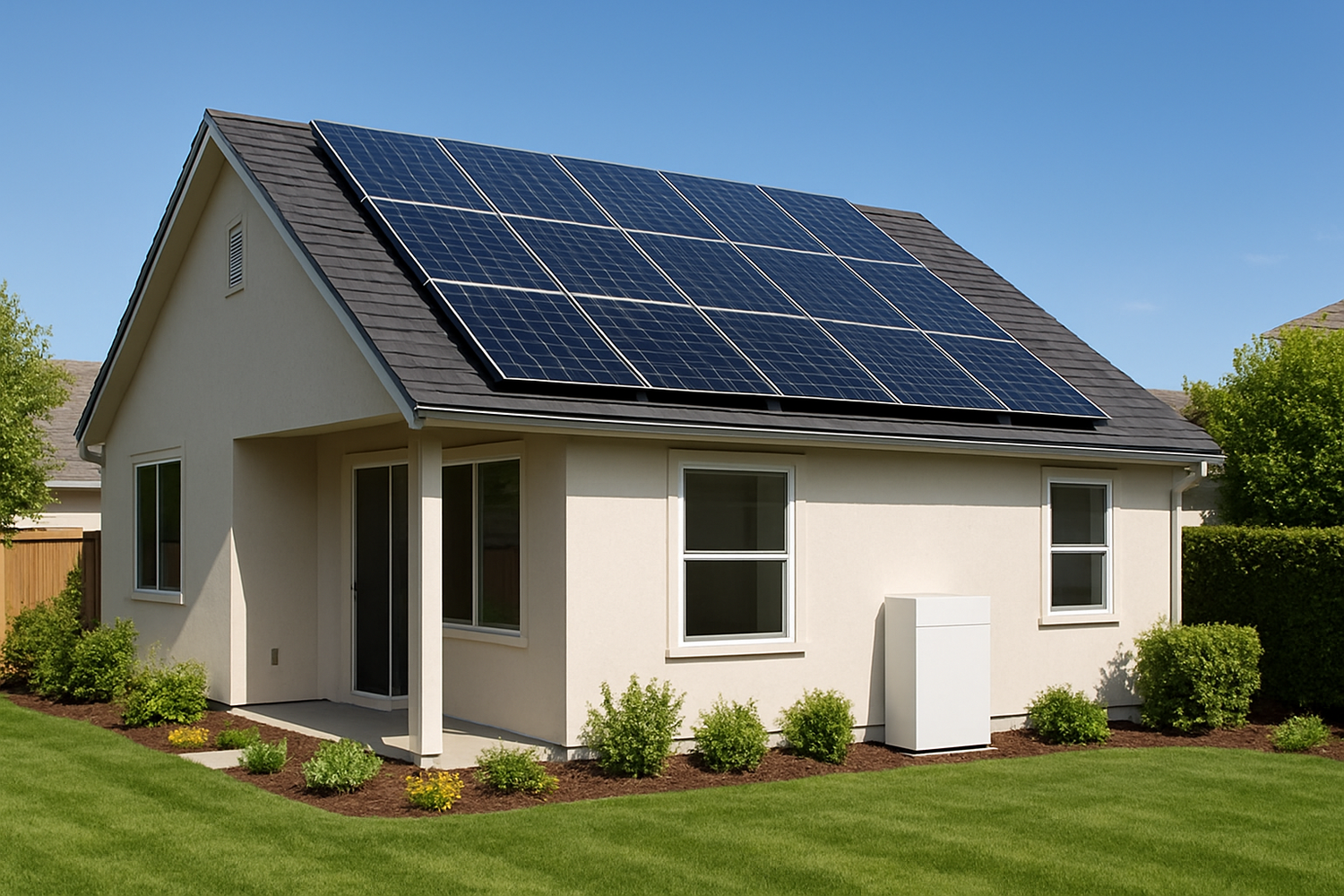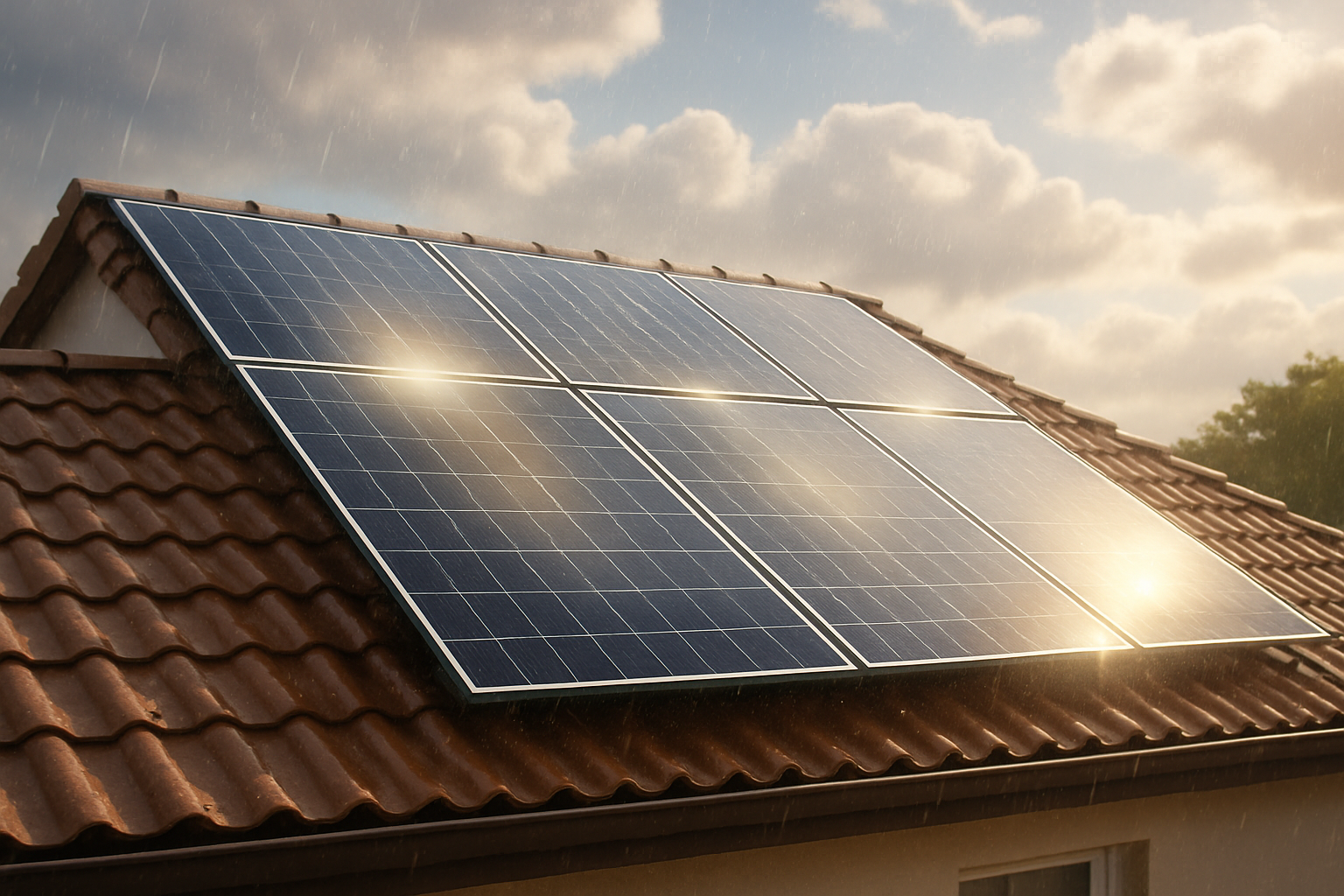The landscape of real estate is evolving, with sustainability features gaining significant traction. Among these, solar energy stands out as a powerful addition, offering compelling advantages for property owners, especially those managing rental units. This shift towards clean energy is not just about environmental responsibility; it increasingly impacts financial metrics like the capitalization rate, or "cap rate," a key indicator for real estate investors.
Understanding how solar installations affect your property's cap rate can provide a strategic advantage. It helps you make informed decisions that enhance profitability and property appeal in a competitive market.
Understanding Capitalization Rate (Cap Rate)
What is Cap Rate?
The capitalization rate is a fundamental metric in real estate valuation. It offers investors a quick way to estimate the potential return on a real estate investment. You calculate it by dividing a property's Net Operating Income (NOI) by its current market value. This ratio, expressed as a percentage, provides an assessment of the yield a property generates over one year.
For example, if a property generates $50,000 in NOI and has a market value of $1,000,000, its cap rate would be 5%. A higher cap rate generally indicates a higher potential return, though it can also signal higher risk.
Factors Influencing Cap Rate
Several factors shape a property's cap rate. These include prevailing market conditions, the property type, its location, and the quality of its tenants. Economic factors, such as interest rates and inflation, also play a role. As the real estate market embraces sustainable solutions, energy efficiency and renewable features, like solar panels, are becoming increasingly influential in this calculation.
Solar Energy's Direct Impact on Net Operating Income (NOI)
Solar energy systems directly enhance a rental property's Net Operating Income (NOI) by influencing both income and expenses. This direct financial benefit contributes positively to the cap rate.
Reduced Utility Costs
Installing solar panels significantly lowers or even eliminates electricity bills for a property. This applies to common areas in multi-unit dwellings or directly to tenant expenses, depending on the lease structure. Lower operating expenses translate directly into higher NOI for the property owner. For instance, a solar energy system that saves $1,000 per year on energy bills could add an impressive $20,000 to the property's value, according to research.
The global investment landscape reflects this growing trend. The International Energy Agency's (IEA) World Energy Investment 2023 report highlights that clean energy investment has surpassed fossil fuel spending. In 2023, solar power investment alone was expected to exceed $1 billion per day, outstripping investment in oil production for the first time. This surge in investment underscores the economic viability and cost-effectiveness of solar technology. In 2024, solar photovoltaics were, on average, 41% cheaper than the lowest-cost fossil fuel alternatives, demonstrating a significant price advantage.
Increased Rental Appeal and Occupancy Rates
Modern tenants increasingly prioritize energy-efficient and environmentally friendly living spaces. Properties equipped with solar panels offer a compelling advantage, attracting a growing demographic of eco-conscious renters. This enhanced appeal can lead to faster lease-up times, lower vacancy rates, and potentially allow for higher rental rates. Studies indicate that sustainable buildings can attract higher-quality tenants and allow for rent increases of up to 10%.
Incentives and Tax Benefits
Governments at various levels offer incentives to encourage solar adoption, which can significantly offset initial investment costs for rental property owners. For instance, in the United States, rental properties can qualify for the federal Investment Tax Credit (ITC), which offers a tax credit of up to 30% of the total solar panel and battery storage installation costs. These financial benefits directly improve the return on investment and contribute to a healthier NOI.
Solar Energy's Influence on Property Value and Cap Rate
Beyond direct NOI improvements, solar energy installations contribute to a property's overall market value, which in turn impacts the cap rate calculation.
Property Value Appreciation
Solar panels are considered valuable upgrades, similar to a renovated kitchen. Numerous studies confirm that homes with solar installations sell for a premium. Research by the Lawrence Berkeley National Laboratory found that homes with solar panels sold for an average of 4.1% more than comparable homes without solar. More recent data, based on Zillow, suggests this premium has increased to 6.8%. Buyers are often willing to pay more for properties that promise long-term utility savings. Additionally, properties with solar panels often sell faster than those without, making them more marketable assets.
Risk Mitigation and Energy Independence
Solar energy systems provide a degree of insulation from volatile energy prices, offering more predictable operating costs. This stability is particularly appealing to investors. Pairing solar with advanced energy storage systems, such as lithium iron phosphate (LiFePO4) batteries and integrated home energy storage solutions, further enhances resilience. These systems provide backup power during grid outages and allow for peak-shaving, where you use stored energy during high-cost periods. This reduces reliance on the grid and contributes to greater energy independence.

Sustainability and Market Trends
The global emphasis on sustainability continues to grow, influencing consumer preferences and investment decisions. Rental properties with solar energy align with environmental, social, and governance (ESG) goals, making them more attractive to a broader pool of tenants and investors. This commitment to clean energy positions your property favorably in a market that increasingly values ecological responsibility.
Governments worldwide are setting ambitious renewable energy targets. For example, the European Union aims to source at least 42.5% of its final energy consumption from renewables by 2030. More than 130 countries have committed to tripling renewable energy capacity by 2030, with solar and wind expected to be major contributors. Aligning your rental property portfolio with these trends can secure its value for the future.
Strategic Considerations for Rental Owners
Adopting solar energy for your rental properties involves thoughtful planning to maximize the financial and operational benefits.
System Sizing and Design
Properly sizing a solar energy system is crucial for achieving optimal performance and cost savings. A professional assessment of the property's energy consumption patterns, roof space, and sun exposure ensures the system meets current and future energy needs efficiently. This tailored approach helps you avoid over- or under-sizing, leading to the best possible return on your investment.
Integration with Energy Storage
Pairing solar panels with advanced energy storage systems significantly enhances the value proposition. Our lithium iron phosphate (LiFePO4) batteries are known for their high performance, safety, and reliability. Integrated home energy storage systems combine these batteries with hybrid inverters and solar panels, creating a complete energy solution. This integration allows you to store excess solar energy for use during peak demand hours or at night, further reducing reliance on grid electricity and providing dependable backup power. For properties in remote areas, off-grid solar solutions offer complete energy independence, providing reliable power for homes, farms, and cabins.
Long-Term Maintenance and Reliability
Modern solar energy systems are designed for durability and require minimal maintenance, often coming with warranties spanning 25 years or more. Choosing high-quality components, such as our reliable lithium batteries and efficient solar inverters, ensures long-term performance and peace of mind. Our commitment to providing reliable and scalable energy solutions helps property owners achieve true energy independence and sustained financial benefits over the lifespan of their solar investment.
The Path to Energy Independence for Rental Properties
For rental owners, investing in solar energy is a strategic move that extends beyond environmental benefits. It directly impacts your property's Net Operating Income by reducing utility expenses and increasing rental appeal. This, in turn, positively influences the capitalization rate, making your properties more valuable and attractive to tenants and investors alike.
By embracing solar and integrating it with advanced energy storage, you gain greater control over energy costs, enhance property resilience, and align with global sustainability trends. This approach positions your rental properties for long-term success, offering both financial gains and a contribution to a more sustainable energy future.





Leave a comment
All comments are moderated before being published.
This site is protected by hCaptcha and the hCaptcha Privacy Policy and Terms of Service apply.